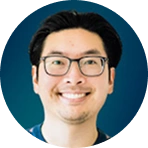Table of contents
A SIBO Diet Might Be the Answer to your Gut Issues
You eat healthy (most of the time). You try cutting out dairy, gluten, maybe even coffee. But still bloating, gas, weird bathroom schedules, and that stubborn belly discomfort never really go away. It’s frustrating. And if you’ve been ping-ponged between doctors and diets with no clear answer, there’s a chance you’ve run into something called SIBO.
SIBO stands for Small Intestinal Bacterial Overgrowth. It happens when bacteria end up growing in places they’re not supposed to, throwing off the balance of your digestive system. That shift can trigger a range of uncomfortable symptoms, often leaving people searching for answers. One of the first things that usually comes up is the diet: what is SIBO diet, and how can food help get things back on track?
Let’s try to put it in simpler words.
So, What Is SIBO?
SIBO happens when bacteria that are supposed to live in your large intestine (colon) end up
setting up camp in your small intestine instead. Not ideal.
This causes fermentation of food in the wrong place, which leads to all sorts of symptoms like:
● Bloating
● Gas
● Abdominal pain
● Diarrhea or constipation (or both)
● Nutrient deficiencies

It’s a hidden culprit behind a lot of IBS cases. If you’ve ever walked out of a restaurant feeling
like your stomach’s about to explode, you know the feeling.
What Is SIBO Diet And Why Does It Matter?
Here’s the deal: food is a big part of managing SIBO. The wrong foods can feed those overgrown bacteria. The right ones can help starve them out and support your gut healing.
That’s where the question, “What is SIBO diet?” becomes important. This isn’t a one-size-fits-all plan, but it’s a great place to start.
A SIBO diet aims to reduce fermentable carbs (called FODMAPs) that fuel the bacteria, while still nourishing your body.
Some popular SIBO diet approaches include:
● Low FODMAP Diet: Cuts down on fermentable carbs.
● SIBO Specific Food Guide (SSFG): Created by Dr. Allison Siebecker, tailored for SIBO.
● Bi-Phasic Diet: A phased approach that gently restricts and reintroduces foods.
All of these fall under the umbrella of what is SIBO diet, with the same goal: to help calm your gut and get your symptoms under control.
Best Diet for SIBO: Where to Begin
If you’re just starting out, go simple. You don’t need to overhaul your life overnight. Start by reducing high-FODMAP foods like:
| High-FODMAP Foods to Avoid | Why to Avoid |
| Onions | High in fructans, they ferment quickly in the small intestine |
| Garlic | Similar to onions, they can cause gas and bloating |
| Apples | High in fructose and polyols, both fermentable sugars |
| Beans | Contain galacto-oligosaccharides (GOS), a strong FODMAP group |
| Wheat | Contains fructans and can contribute to bloating |
And start including more of what’s better for your body:
| Best Foods for SIBO | How It Helps | Benefits |
| Zucchini | Low-FODMAP veggie | Gentle on digestion, rich in antioxidants |
| Carrots | Easy to digest | Supports gut lining and eye health |
| Cucumbers | Hydrating and soothing | Helps calm inflammation |
| Spinach | Nutrient-rich, low FODMAP | Good source of iron, supports healing |
| Lean meats | Protein without carbs | Doesn’t feed bacteria, supports muscle health |
| Eggs | Complete protein source | Easy to digest and versatile |
| Rice (moderation) | Low-FODMAP grain | Provides energy without excessive fermentation |
The best foods for SIBO are low in fermentable sugars and easy to digest. You can check out Beometry’s SIBO bacteria symptoms guide if you’re unsure about what signs to look for in the first place.

Why SIBO Diet Isn’t Just About Food
While diet plays a huge role, it’s not the only piece. Managing stress, improving sleep, and healing the gut lining, all of that matters too.
That’s why many people find success working with a coach who understands how it all fits together. SIBO health coaching helps you stay consistent, track your reactions, and avoid going in circles.
And if you’re currently being treated, knowing how to treat SIBO makes a big difference.
What to Expect When You Start a SIBO Diet
It might be uncomfortable at first. Cutting down on carbs and sugars can cause die-off symptoms: fatigue, headaches, and even mood swings.
That’s normal. It’s your body adjusting as the bacteria lose their food supply.
Keep a food and symptom journal. Stay hydrated. Don’t push too hard, too fast. And if things feel overwhelming, don’t hesitate to ask for support.
Need a Plan That’s Actually Sustainable?
SIBO is more than just surviving on bland meals and guessing your way through Google searches. If you’re tired of trial-and-error, Beometry offers personalized SIBO health coaching, nutrition plans, and support that actually make sense for real life.
Check out Beometry’s SIBO Coaching Programs and take the first step toward feeling like yourself again.
Let’s get your gut back on track together.


